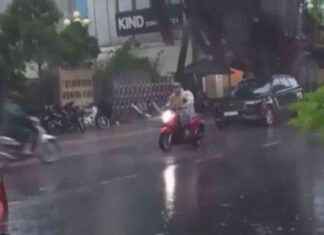the Paintings, predominantly small-format, spreading out in the rooms. Quietly placed on the walls similar to liquefied the field. I know of the sensitivity in the paintings with lines, lines and simple shapes, and notice how their penselskrap, paint stains, and a dry seductive surfaces captures my attention. This is the artwork so far from painting heroic claim that you can get, I think. And breathe out.
Raoul De Keyser’s expression is neutral and balanced, it reminds vaguely of pop art, minimalism, or informal art. And yet painted the belgian artist that almost no one else. A few years ago in Berlin, I had fascinated seen what was to be his last galleriutställning – only a dozen or so smaller works. I marveled over his seemingly simple and groping pictures. To De Keyser’s paintings are now displayed large at the museum of fine arts S. M. A. K. in Ghent just to the north of Brussels, is a rare opportunity to see more. It is the first retrospective since De Keyser died in 2012, just over 80 years old, and in the spring continue to Munich.
From the 1980s onwards received De Keyser all major international successes, and was early an important influence on other painters, including Luc Tuymans is only one example.
a very special insight in the medium’s properties. What is possible and important to do – and what has not yet been made just like this? The paintings formulate questions, rather than to note how the answers might look like.
I talked to The Keyser only suggests and read the painting, awaiting and awaiting form. Preserves the images as suggestions. His way to paint is on the border to the poor, and yet – or precisely because – he manages to produce paintings with a magnetic force.
The Keyser’s work has a prosaic monumentality, shaped with a toned-down materiality. One of the works in the exhibition, ”Zinkend (Luc)” from 1982-83, makes me think of Gerhard Richter’s abstractions, but De Keyser’s painting has human dimensions. Instead of declining the permission, along with one of the sons name in brackets, indicates the direction. The painting is included in a suite dedicated to the kids. Väggtexten also informs that his wife Your became ill and passed away during the same time.
the reality that De Keyser’s streaks, stains and surfaces show me? Despite their abstract nature is in all, a close relationship with the external forms and circumstances, gradually transformed by the artist to the intricate painterly context. The ever-recurring lines that divide the area of the image has its origin in the fotbollsplanens pinstripe and against a blue background, they can be read as condensation from an aircraft. The tangle of dark lines against the deep pink color depicting brödgranens dense branches, which in the ”Grenier 14” from 1992.
Raoul De Keyser ”Grenier 14”, 1992. Photo: Dirk Pauwels
The Keyser painted what he saw when he looked out through the window. And the stick which he leaned on as he walked. The shiny trähandtaget is standing against a white background with two jittery intersecting lines, simple signs for the room tiles. Everyday life floating in an abstract space.
That the paint was for De Keyser, to move in the world, that through the color take and feel the existence of things and phenomena. He went against an ever-freer and more dissolved expression. One of his very last paintings are ”Green, Green, Green” – both an altarpiece and a schematic football field.







